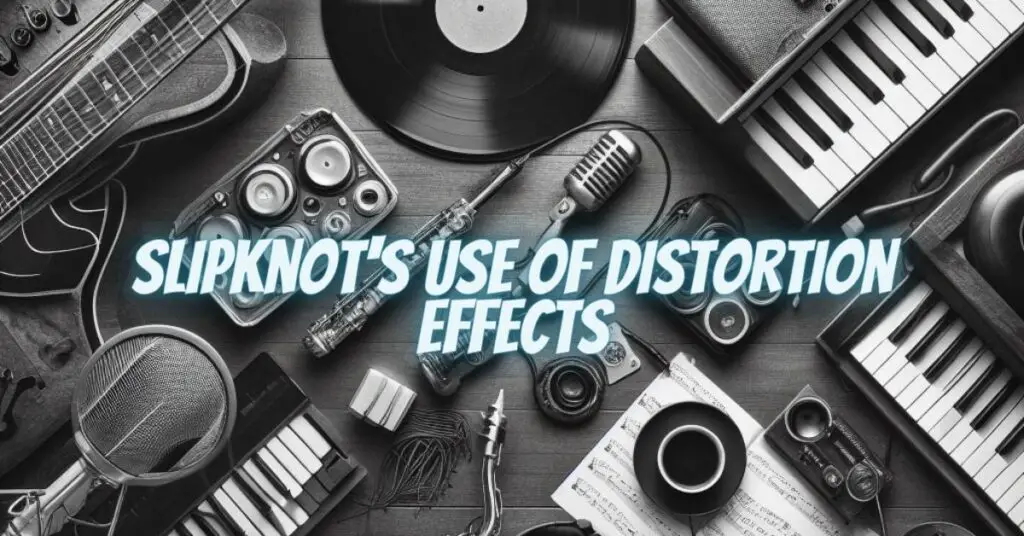Slipknot, the masked metal juggernaut from Des Moines, Iowa, is a band known for their visceral and chaotic brand of heavy music. Central to their signature sound is the aggressive and thunderous use of distortion effects. In this article, we’ll delve into the world of Slipknot and explore how they’ve harnessed the power of distortion to create a unique and menacing sonic landscape.
The Birth of Slipknot’s Sound
Slipknot emerged in the late 1990s with a sound that can only be described as ferocious. Combining elements of metal, industrial, and alternative rock, the band’s music is characterized by its sheer aggression and cathartic release. Key to this raw and unapologetic sound is their innovative use of distortion effects.
Distortion: The Sonic Weapon
Distortion is a staple of rock and metal music, but Slipknot takes it to a whole new level. Their guitars, bass, and even vocals are drenched in distortion, creating an intense, overdriven, and gritty texture that defines their sonic identity.
Guitar Distortion:
- Multiple Guitarists: Slipknot boasts a dual-guitar assault featuring Jim Root and Mick Thomson. Both guitarists favor high-gain amplifiers and distortion pedals to generate their trademark wall of sound.
- Extended Range Guitars: Root and Thomson often use seven-string and eight-string guitars, which allow them to explore deeper and heavier sonic territories, further accentuating their distortion-driven sound.
- Innovative Pedal Chains: The guitarists use elaborate pedal setups to craft their sound. Distortion, overdrive, and fuzz pedals are employed to push their amps to the brink and create a searing, aggressive tone. Some of their favorite pedal brands include BOSS, Dunlop, and MXR.
Bass Distortion:
- Signature Bass Tone: Alessandro Venturella, Slipknot’s bassist, brings a massive, distorted low-end to the mix. He uses overdrive and distortion effects to add grit and intensity to the low frequencies, anchoring the band’s sound with a heavy punch.
- Bass Amps and Pedals: Venturella employs powerful bass amplifiers and distortion pedals, sometimes even stacking multiple distortions to achieve the desired level of intensity.
Vocal Distortion:
- Corey Taylor, Slipknot’s frontman, employs distortion effects not just on the guitars and bass but also on his vocals. He often uses a vocal processor with distortion and pitch-shifting capabilities to add a layer of chaos to his already aggressive vocal style.
The Impact on Their Sound
Slipknot’s aggressive use of distortion serves several crucial purposes:
- Aggression and Intensity: The distortion enhances the aggression in their music, making their sonic assault feel even more powerful and unrestrained.
- Grit and Texture: The added grit from the distortion lends a unique texture to their sound, ensuring that every note and scream cuts through the mix.
- Sonic Chaos: Slipknot’s music is all about controlled chaos, and the distortion effects contribute significantly to the chaotic, volatile atmosphere in their songs.
- Unique Identity: By pushing the boundaries of distortion, Slipknot has carved out a unique and instantly recognizable sonic identity that sets them apart in the metal world.
Slipknot’s mastery of distortion effects is a testament to their commitment to pushing the limits of what’s possible in heavy music. Their fearless experimentation with distortion has resulted in a sound that is brutal, intense, and wholly their own. It’s a sound that has resonated with legions of fans worldwide and made Slipknot one of the most iconic and influential bands in modern metal. As they continue to evolve and explore new musical horizons, their innovative use of distortion effects remains a key element in their enduring legacy.

